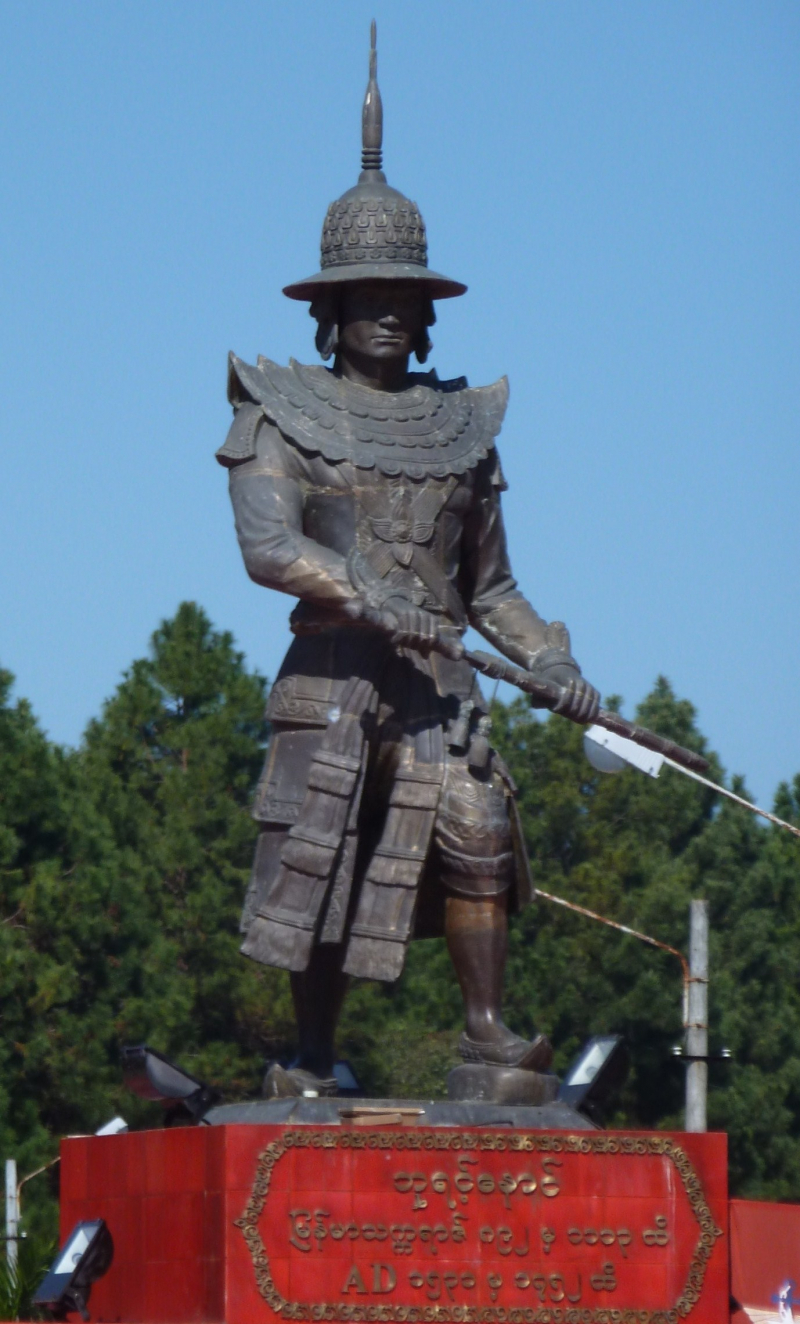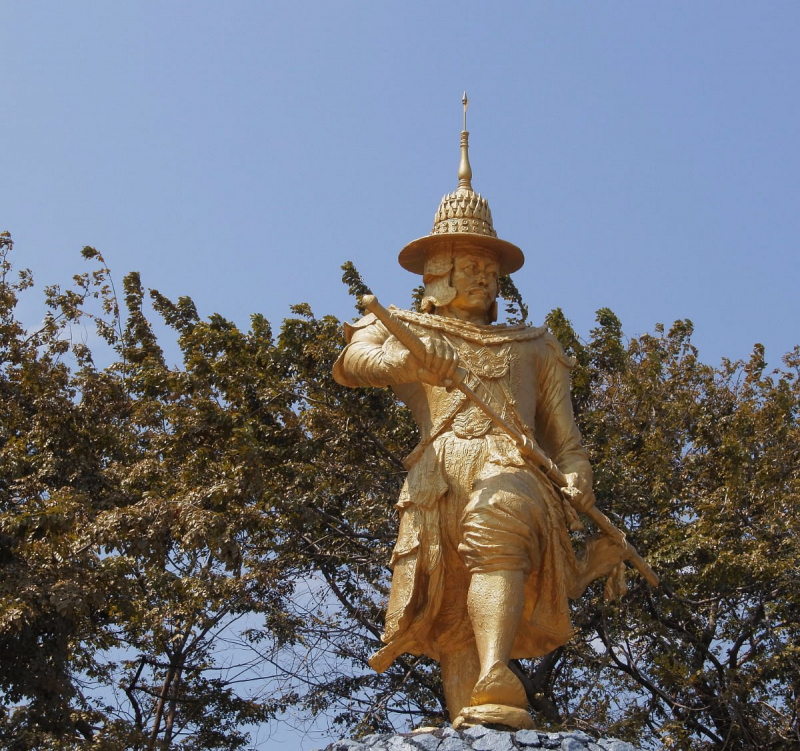Bayinnaung
Bayinnaung Kyawhtin Nawrahta (16 January 1516 - 10 October 1581) was the King of Myanmar during the Toungoo Dynasty from 1550 to 1581. During his 31-year reign, which has been described as the "greatest explosion of human energy ever seen in Burma," Bayinnaung built what was likely the largest empire in Southeast Asian history, encompassing much of modern-day Myanmar, the Chinese Shan states, Lan Na, Lan Xang, Manipur, and Siam.
Although he is best known for his empire-building, Bayinnaung's greatest legacy was the incorporation of Shan states into Irrawaddy Valley-based kingdoms. Following the conquest of the Shan states in 1557-1563, the king instituted an administrative system that diminished the power of hereditary Shan saophas and brought Shan customs in line with lowland norms. It ended the threat of Shan raids into Upper Burma, which had loomed since the late 13th century. His Shan policy was followed by Burmese kings until the kingdom fell to the British in 1885.
However, Bayinnaung was unable to replicate this administrative policy throughout his vast empire. His empire was a loose confederation of formerly sovereign kingdoms, the kings of which were loyal to him as the Cakkavatti ("Universal Ruler") rather than to the Kingdom of Toungoo. Indeed, just over two years after his death, Ava and Siam revolted. By 1599, all of the vassal states had revolted, and the Toungoo Empire had collapsed completely.
Bayinnaung, along with Anawrahta and Alaungpaya, is regarded as one of Burma's three greatest kings. Some of the most prominent locations in modern Myanmar bear his name. In Thailand, he is also known as the Phra Chao Chana Sip Thit ("Conqueror of the Ten Directions").







